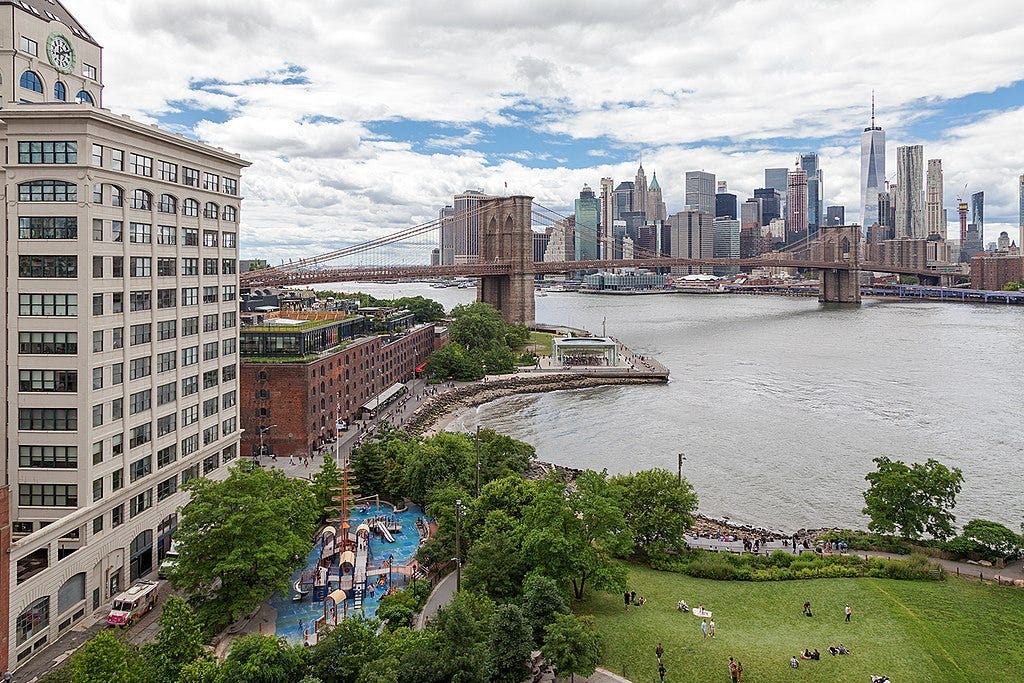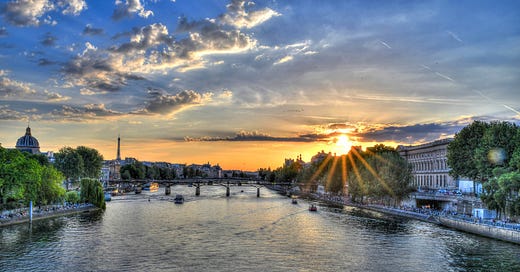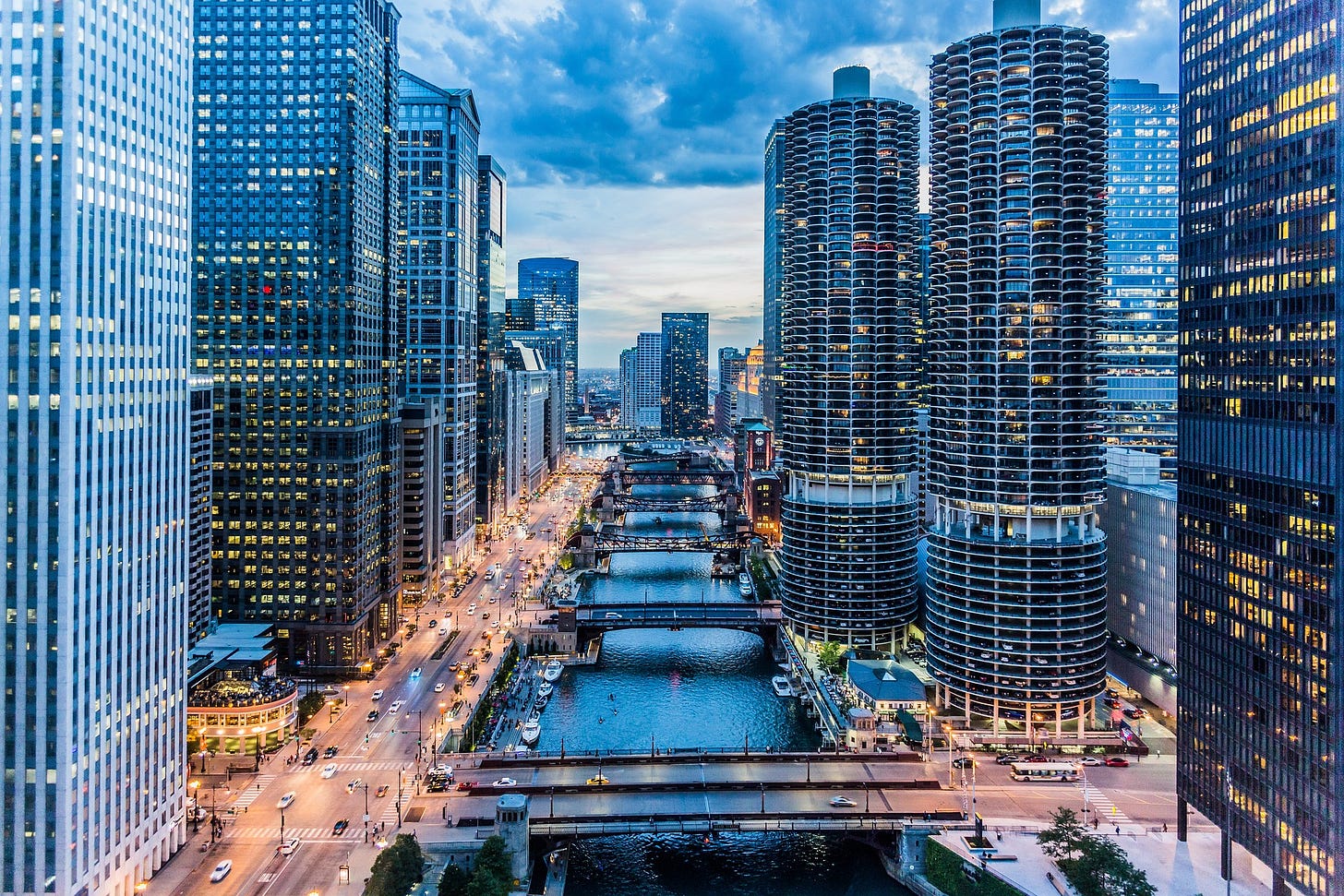All Urban Rivers Should Be Swimmable
Despite the bad press, Paris's Seine cleanup should be an inspiration to cities everywhere.
As the Paris Olympics kicked into high gear last week, some of the world’s greatest swimmers took a historic dip in the once-heavily polluted Seine.
In anticipation of the Olympic games, Parisian officials embarked on an ambitious plan to get athletes into the river with a $1.5 billion river cleanup project. While the first outdoor swimming event, the triathlon, was delayed due to lingering water cleanliness challenges, the athletes eventually jumped in — though subsequent swimming events have also been delayed.
Yet despite these setbacks, there’s no doubt that the Seine has undergone a remarkable transformation, one that started well ahead of the Olympics. Like many urban rivers, as recently as a few decades ago, the Seine contained a horrid mix of pollution and sewage. Regular wastewater dumping in the river also lowered the Seine’s oxygen levels, which helped to kill off much of the river’s wildlife. But today, after decades of cleanup efforts, there’s less raw sewage being dumped in the river, which has helped species like salmon and shad return.
Humans, however, have been harder to coax back into the water. That’s because, ideally, people want to swim in rivers with no sewage, not just less sewage. So the recent Olympics-inspired cleanup has tried to prevent some of the remaining untreated wastewater from being dumped into the river and reduce E. coli bacteria levels to the point where it’s safe enough to swim.
Here in the US, we’ve made plenty of our own progress in cleaning up urban rivers over the past few decades, perhaps best demonstrated by the fact that Ohio’s Cuyahoga River no longer regularly catches on fire. In 1969, after an oil slick on the Cuyahoga ignited, the “burning river” became an enduring inspiration to clean water campaigns – and today, the river is once again home to more than two dozen fish species.
But as Paris — and many cities in the US — show us, our benchmark for success on river restoration doesn’t have to be simply “not on fire.” And some cities, like Munich, have even taken river restoration efforts to a whole other level, actively encouraging everyday people to return to the urban waterways to swim and spend time with wildlife.
Making a river swimmable for professional athletes affirms that humans, too, are a vital part of a thriving urban ecosystem. And by reaching this standard, we can transform our cities’ rivers from neglected wastelands into shining ribbons of blue, filled with people and wildlife alike.
“We can have wide-ranging, hugely beneficial impacts from this urban river restoration…for the humans and for biodiversity,” Aaron Sexton, a restoration ecologist and incoming professor at Cornell University, tells me.

The United States technically set the same goal as the Parisians more than 50 years ago. The 1972 Clean Water Act stated that by July 1983, wherever possible, water quality should provide “for the protection and propagation of fish, shellfish, and wildlife and … for recreation in and on the water.” This goal is often referred to as simply “fishable and swimmable.”
In the decades that followed, we made a lot of progress in improving water quality by treating wastewater and regulating industrial pollutants. But many urban rivers have remained unsafe to swim in, largely because we were still dumping raw sewage directly into them. Not all the time—but enough to make the rivers icky places to swim.
In cities with “combined sewer systems,” like Chicago or much of New York, rainwater is collected in the same sewer lines that carry wastewater away from our sinks, tubs and toilets. Normally, that’s an efficient way to send all of that water to the treatment plant. But when it rains too hard, those sewer lines can fill up pretty quickly, and we usually let them overflow directly into nearby bodies of water. In New York, for example, sewage overflows into the harbor so often that there was once a Twitter bot that alerted every time it happened, often by writing a little poem.
Paris also has a combined sewer system. But part of the city’s new cleanup effort is a 13 billion-gallon underground storage tank known as the Austerlitz Basin, which is attempting to tackle this overflow problem. Now, when it rains in the city, stormwater can be collected in that basin and slowly released into the sewage system, instead of flooding the system all at once and overloading it.
This kind of basin system could help solve the overflow problem in many US cities, too. And, in fact, many US cities have taken this initiative. Washington, DC, for example, built a massive tunnel to prevent sewage overflows into the Anacostia River. Akron, Ohio has also been building a similar system to prevent overflows into the Cuyahoga — and in Chicago, the Tunnel and Reservoir Program (or “TARP”) first kicked off construction in the 1970s, with Phase 2 set to finish by 2029.
Water quality in some of these cities has improved. Washington, DC has been planning to hold the first legal swim in the Anacostia for more than 50 years. In Chicago, overflows have been “nearly eliminated” — and the city will hold the first organized swim in the river in almost 100 years this September. (Correction: The permits for that swimming event have been denied: https://blockclubchicago.org/2024/07/14/chicago-river-swim-event-denied-permit-by-city-over-safety-concerns/)
As Paris’s setbacks demonstrate, these systems aren’t a panacea – in May, it rained so much that even the new basin was overloaded. And as climate change brings more rain, these systems may have to handle even more water. Preventing overflows also wouldn’t necessarily eliminate all river pollution in many areas, since there might still be issues from polluted runoff or decades-old pollutants that remain trapped in river sediments, for instance. But improved sewer systems can be supplemented with other strategies. Green infrastructure like permeable pavement and rain gardens can prevent rainwater from reaching the sewage system in the first place, says Christine Kirchhoff, a water systems researcher at Penn State University.
The swimmability of rivers isn’t just about water quality, though. Much of the Parisian section of the river is still a confined channel with concrete walls, as is common for urban rivers. But imagine getting off from work on a hot summer day, and then walking down to the bank of a river for a dip, or even just to wade around in the cool water and lounge on the shore.
A real river—a free river—is not merely a restrained canal, but a diverse ecosystem of water, soil and vegetation, branching and winding through a landscape. A river is a place where fish can dart through fast-moving currents and gather in slow, shallow water along rocky banks, where an array of aquatic insects can lay eggs and birds can putter around on muddy shores. To accommodate people, there also needs to be shoreline infrastructure that entices people into the water and assures them the water is safe (to counteract the decades-old belief in urban rivers as “gross”)
Recreating this kind of river in the middle of a major city isn’t easy. But it’s possible. In Munich, restoration efforts have taken down much of the hardened embankment along the Isar River and replaced it with more natural riverbanks. Today, the local wildlife—like beavers and redfish —live in a dynamic riverine habitat that shifts and flows, complete with shallow pools and deep channels, slow trickles and powerful currents. Humans show up along the banks, too, to swim and enjoy the water.
“The Munich river restoration, and the parks that are surrounding it, is one of the coolest places in the world,” says Sexton, who currently lives in the city.
Some US cities might even be closer to this urban riparian paradise than they realize. Here in Chicago, water quality in the river may have only improved recently, but water quality in Lake Michigan has been sparklingly clean for even longer (the result of another impressive infrastructure project to prevent the dirty Chicago River from flowing into the lake). Today, Chicagoans flock to the lakeshore on summer weekends, wading in at beaches up and down the city’s extensive public coastline and even diving in from concrete embankments. One day, that sight could be replicated up and down the river, too.
Even New York, with its famously pungent and unwelcoming East River, is closer to embracing wild urban swimming than you might think. Take New York’s Brooklyn Bridge Park — twenty years ago, that stretch of the Brooklyn waterfront was mostly warehouses, piers and a place to film scenes for The Sopranos. Today, locals and tourists can walk through wooded paths and watch birds flit about in restored wetlands.
But if we chose to live up to the goals we set for ourselves 50 years ago with the Clean Water Act, Brooklyn Bridge Park wouldn’t have to end where the still-sort-of-disgusting East River begins. Instead, we could choose to jump back in the water.








